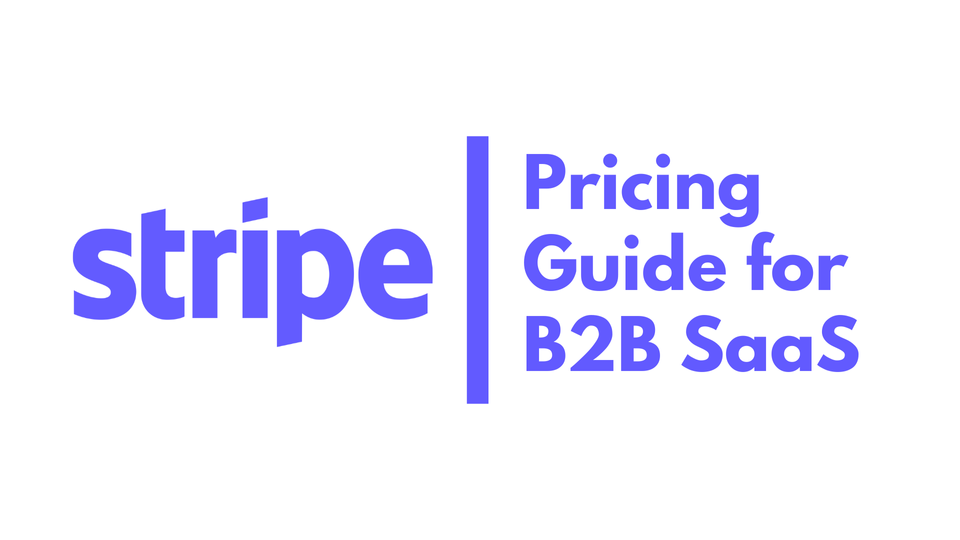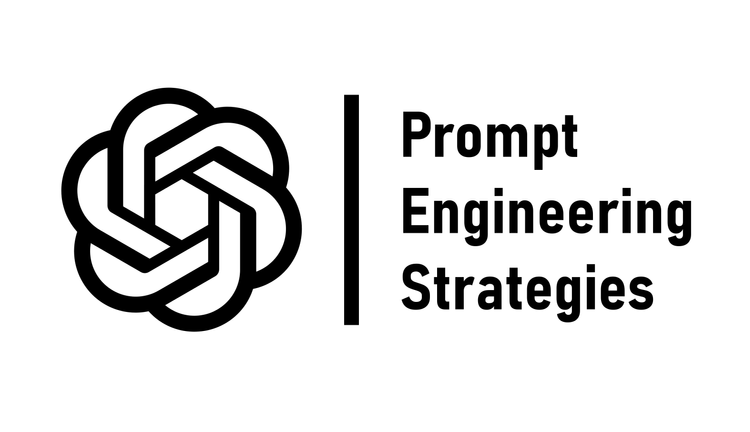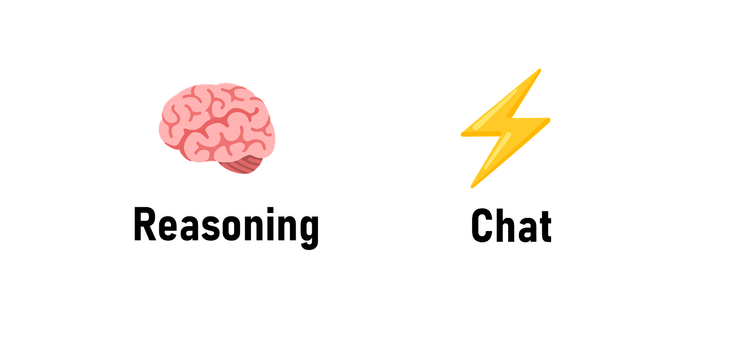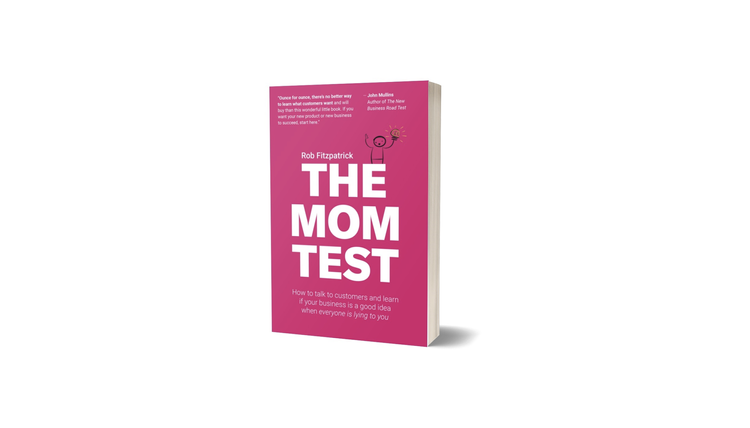Stripe: Pricing for B2B SaaS Founders

Pricing is one of the most critical yet challenging aspects of building a successful B2B SaaS business. It’s not just about setting a number—it’s about understanding your customers, quantifying the value you deliver, and aligning your pricing strategy with your business goals. In this article, we’ll explore how to approach pricing for B2B SaaS founders, drawing insights from Stripe’s Pricing Guide for B2B SaaS Founders.
Understanding Your Customers
The Importance of Customer Discovery
Before diving into pricing, you need to deeply understand your target customers and their pain points. This starts with thorough customer and market research.
- Start with Your Own Experience: Begin by asking yourself if the problem you’re solving is one you’ve personally experienced or witnessed. This ensures you’re uniquely positioned to address it.
- Document the Problem: Capture everything you know about the problem in a single document. Use this to challenge your assumptions and dissuade yourself from pursuing the idea if it doesn’t hold up.
- Gather Feedback Early: Share your problem overview with potential customers, especially sales leaders, and ask for their honest feedback. Focus on uncovering objections and negatives to refine your understanding.
Focus on "Disproportionately Influential Customers"
In B2B, certain decision-makers in the company often hold disproportionate influence over purchasing decisions. Hence, instead of focusing on the Ideal Customer Profile (ICP) as founders often do, you also need to define your Disporportionately Influential Customer (DIC). Define this individual as precisely as you can because they have real swaying power in the businesses you want to target. Spend time building relationships with these individuals to gather insights and understand their needs.
Crafting Your Value Proposition
Aligning Value with Customer Needs
Your value proposition is the foundation of your pricing strategy. It should clearly articulate how your product solves your customers’ problems and delivers value.
- Differentiate Between the Company and Individual Operators: Tailor your messaging to address the needs of the company, the manager, and the individual operator. Each may perceive value differently.
- Focus on Reals and Feels:
- Reals: Rational factors like functionality, features, and practicality.
- Feels: Emotional factors like how your product helps users achieve their personal or professional goals.
Gathering Feedback from Different Personas
While gathering feedback, it’s important to recognize that different personas and company types will perceive value from different angles. Each customer will provide feedback through a lens that aligns with their company’s objectives. It’s your responsibility to acknowledge these differences and adapt accordingly.
- Enterprises: Larger organizations often prioritize security, availability, and reliability. They need solutions that can scale with their operations and integrate seamlessly into their existing systems.
- Startups: Smaller, fast-moving companies may prioritize speed and cost-effectiveness. They need solutions that are easy to implement and deliver immediate value without significant upfront investment.
For example, a SaaS product targeting enterprises might emphasize enterprise-grade security and 24/7 support, while the same product targeting startups might highlight its affordability and quick setup time.
Iterating Based on Feedback
Your value proposition will evolve as you gather feedback and refine your product. Rarely will founders ever get it right the first time; rather, it's about getting an MVP into customers' hands as early as possible and observing if and how they derive value from it. For example, Atlassian initially built JIRA as a bug-tracking tool for developers but later expanded into customer support with JIRA Service Desk after observing how IT and customer support teams adapted the product.
Determining Your Price Point
Start with the Order of Magnitude
Begin by identifying the general price range your product falls into (e.g., $10, $100, $1,000). Avoid getting bogged down in small price adjustments early on. Instead, focus on understanding how users derive value from your product and iterate over time.
Competitive Pricing
Ask yourself: “What would customers do if my solution didn’t exist?” This helps you identify both direct and indirect competitors, including alternative solutions like spreadsheets or hiring additional staff. Understanding the competitive landscape will help you position your product effectively.
Cost Pricing
Consider how your costs scale with product usage. For SaaS businesses, customer acquisition costs (CAC) often dominate expenses. Ensure your pricing covers these costs while remaining attractive to users.
Value Pricing
Value-based pricing ties your product’s price to the economic value it creates for users. This could include:
- Increased Revenue: Access to new markets or customers.
- Reduced Costs: Improved efficiency or eliminating other expenses.
- Time Savings: Enabling users to do more with less effort.
Aim to capture 5%–15% of the value your product delivers. For example, if your product helps a customer save $100,000, charging $5,000–$15,000 is reasonable.
The Human Element in Value Creation
When determining your price point, it’s crucial to consider the human element in the value-creation process. Even if your value proposition is logically sound, it must align with the operational reality and ambitions of the buyer.
For example, imagine you’re selling to a VP of Product at a scaling startup. While your product might offer cost reductions by reducing the need for additional headcount, this may not align with the VP’s personal ambitions. In many cases, VPs are incentivized to expand their teams to increase their influence within the organization. Proposing a solution that reduces headcount might make business sense on paper but could conflict with the buyer’s goals.
Packaging Your Product
Choosing the Right Packaging Strategy
Packaging brings your pricing and product together into a purchasable offering. Common strategies include:
- Tier-Based: Good-better-best tiers with varying features and prices.
- Usage-Based: Pricing tied to usage metrics like seats, transactions, or data volume.
- Hybrid Models: Combining elements of tier-based and usage-based pricing.
Single Tier vs. Multi-Tier Pricing
When deciding between a single-tier or multi-tier pricing strategy, consider the following:
- Single-Tier Strategy:
- Best For: Products with features that are broadly applicable across user types.
- Why It Works: A single tier simplifies decision-making for customers and ensures that the core product remains attractive. Willingness to pay in this model is typically driven by usage rather than features.
- Example: A product that offers a comprehensive solution with no need to restrict features for different user types.
- Multi-Tier Strategy:
- Best For: Products serving multiple customer personas with varying feature needs and budgets.
- Why It Works: Multiple tiers allow you to cater to different user segments by offering tailored feature sets at different price points. Each tier should align with a specific customer profile or use case.
- Example: A SaaS platform offering basic, professional, and enterprise tiers, each with progressively more advanced features and support.
Pay-As-You-Go vs. Entitlement-Based Subscriptions
When structuring your pricing, you’ll need to choose between pay-as-you-go and entitlement-based subscription models. Each has its own advantages and is suited to different types of customers and business goals.
- Pay-As-You-Go:
- How It Works: Customers pay based on their usage, with no upfront commitment.
- Best For: Price-sensitive users or early-stage startups who want a low barrier to entry.
- Advantages: Encourages trial and adoption, as users only pay for what they use.
- Example: A SaaS tool that charges per transaction or API call.
- Entitlement-Based Subscriptions:
- How It Works: Customers pay a fixed fee upfront for a set usage entitlement (e.g., seats, data volume, or transactions). Overage charges may apply for usage beyond the entitlement.
- Best For: Larger users or businesses that value predictability and need to forecast costs.
- Advantages: Provides revenue predictability for your business and aligns with the needs of enterprise customers.
- Example: A project management tool that charges per user per month with additional fees for exceeding storage limits.
Freemium Pricing: A Go-To-Market Strategy
Freemium is not a pricing model but rather a go-to-market strategy designed to acquire users and build a marketable database of contacts. While it can be an effective way to attract users, it requires careful planning to avoid common pitfalls.
- When Freemium Works:
- Deep Understanding of User Value: You know how users derive value from your product and what levers to pull to encourage them to upgrade to paid tiers.
- Clear Upsell Paths: Freemium users should have a natural progression to paid tiers as they realize the need for additional features or capabilities.
- Example: A productivity tool that offers basic functionality for free but charges for advanced features like team collaboration or analytics.
- Pitfalls of Freemium:
- Cannibalizing Paid Tiers: Offering too many features in the freemium tier can reduce the incentive for users to upgrade.
- Misaligned Expectations: Freemium users may not be your ideal customers, leading to skewed feedback or low conversion rates.
- Resource Drain: Supporting a large number of free users can strain your resources without delivering meaningful revenue.
Key Considerations for Price Packaging
- Understand Your Customer Profiles: Each tier should align with a specific customer persona and their willingness to pay.
- Simplify Complexity: Avoid overwhelming customers with too many options. Guide them toward the best choice for their needs.
- Create Upsell Opportunities: Design your packaging to encourage users to upgrade to higher tiers as they derive more value from your product.
Measuring Success Through an Investor Lens
Why Investors Care About Pricing
Investors view pricing as a critical indicator of a startup’s potential. It reflects your understanding of the market, your customers, and the value your product delivers.
- Market Sizing: Investors evaluate your market opportunity by multiplying your price point by the volume of potential customers. A well-thought-out pricing strategy signals that you’ve done your homework.
- Business Model Alignment: Your pricing strategy influences how you build your team and go-to-market approach. For example, a low-cost, self-serve model requires a different structure than a high-touch, enterprise sales model.
Red Flags for Investors
- Misaligned Pricing and Value: If your pricing doesn’t reflect the value your product delivers, investors will question your understanding of the market.
- Overreliance on Competitor Pricing: While competitive analysis is important, pricing solely based on competitors can signal a lack of confidence in your unique value proposition.
- Complex or Oversimplified Pricing: Investors look for clarity and scalability in pricing models. Overly complex or one-size-fits-all pricing can be a red flag.
Green Flags for Investors
- Problem-First Mindset: Founders who lead with the pain point rather than the product demonstrate a deep understanding of the market.
- User-Centric Approach: Regularly gathering feedback and iterating based on user insights shows a commitment to delivering value.
- Flexibility and Iteration: Investors appreciate founders who view pricing as a dynamic process and are willing to adapt as the market evolves.
Common Pricing Pitfalls
Overloading the Freemium Tier
One common mistake is offering too many features in the freemium or lowest-tier version of your product. While it may seem attractive to give users a lot upfront, this can backfire by cannibalizing your paid tiers. The goal of an entry-level tier should be to provide the minimum viable feature set that delivers enough value to engage users while leaving them wanting more. This creates a natural incentive for users to upgrade to higher tiers for additional functionality.
Underpricing Your Product
Charging too little can undermine your product’s perceived value. Customers may associate low prices with low quality. Even in the early stages, ensure your pricing reflects the value you deliver.
Overcomplicating Pricing
Complex pricing structures can confuse customers and deter them from purchasing. Keep your pricing simple and transparent, especially in the early stages.
Ignoring Total Cost of Ownership (TCO)
Customers often consider indirect costs like integration, management, and training when evaluating your product. Ensure your value proposition accounts for these factors.
Key Takeaways
- Customer Discovery is Ongoing: Understanding your customers and their pain points is a continuous process that informs both your product and pricing.
- Price Reflects Value: Your pricing should align with the economic value your product delivers. Aim to capture 5%–15% of the value created.
- Simplicity Wins: Avoid overly complex pricing structures. Keep it simple and easy for customers to understand.
- Iterate and Evolve: Pricing is not static. Continuously refine your strategy based on customer feedback and market changes.
By following these principles, B2B SaaS founders can build a pricing strategy that not only attracts customers but also supports long-term business growth.




Member discussion